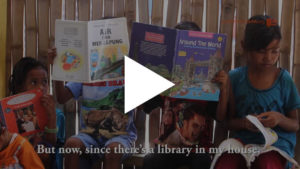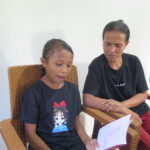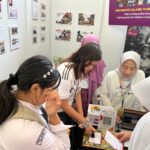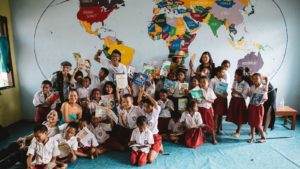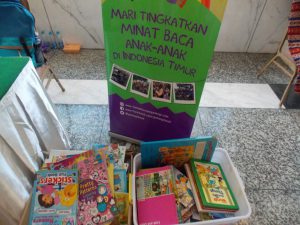Hi! My name is Maleeha Malik and I am Taman Bacaan Pelangi’s latest volunteer! I’m nineteen years old and currently on my gap year – I didn’t want to go straight to uni – so, for the next two months, I’m living in Kondas, three hours away from Labuan Bajo.
I arrived in Kondas with Lukas, one of the other volunteers, just a day after I had arrived in Flores. Kondas is small and quiet. Houses (wood, cement, bricks) spread along both sides of a bumpy, more-rocks-than-tarmac road. My house is halfway through – wooden walls but real glass windows and a front room with a TV and sofas! I have a room at the side: a double bed that is often shared with a guest or my Ibu in the fear that I might be lonely.
I live with Ame Alo and Ine Yus (father and mother respectively in Bahasa Manggarai), as well as their grown up son and a fifteen year old nephew. The house is huge by Indonesian standards – three bedrooms, a front room, an area to eat at the back and a kitchen. The toilet is a squat outside. The shower…
The shower is twenty paces down the road and two minutes along a muddy track. Water from an underground spring is collected in a dam and used for everything – showering, washing clothes and drinking. And, of course, being a pool in the middle of the forest it is utterly public. And so began my biggest learning curve: how to shower in a sarong.
That might sound like quite an easy feat but I can assure you it is no such thing. Luckily, I had Ibu Ellen (the librarian) to talk me through the steps.
First, tie your kain around your chest. (A kain is a traditional sarong with the ends sewn together to make a big cylinder of fabric). This is your chance to wash your face, shoulders and arms. The next step is to open the kain and hold the front between your teeth. Soap up and rinse your body. Lastly, re-tie the kain and wash your legs. You’re now ready to return to the house, wearing the soaking kain and a towel wrapped around your shoulders. God forbid it should fall – if it does and a man sees he has no choice but to marry you…
So why? Why am I in the middle of Flores, showering in a pond and squatting down to pee. The answer is very simple: Taman Bacaan Pelangi.
I first heard about the organisation a year ago after my mum heard Nila speaking at Indonesian Heritage Society. I was immediately intrigued: an organisation that sets up libraries in Eastern Flores to improve literacy rates? Sounds exactly like my thing.
Reading has always been a huge part of my life – I struggle to think how different I would be if I hadn’t had the influences of Harry Potter and endless books on magic and fairies. Books are a way of exploring the world from the safety of your own home, a way of learning new things and seeing that your horizons are so much bigger than you ever thought possible. This is especially important for these children who, without TBP, have very little access to books. To see their excitement over reading and coming to the library is amazing – there are few Western children I know who display that same enthusiasm.
Which brings us to what I am doing.
Every morning, I’m at the school teaching English to Class 3 upwards. In the afternoons I’m in the
library, playing and reading with the kids.
Teaching English is so so much harder than I expected. None of these children have learnt any English before – it’s crazy how much I assumed they would already know. Our first lesson was Hello, my name is… Where do you come from? I decided learning phrases is better at this stage than starting right at the beginning of grammar. But seriously, it is so difficult.
Children start SD (primary school) at six and end at thirteen – that means classes of twenty hyperactive children! It doesn’t help that a lot of the younger ones aren’t fluent in Bahasa Indonesia yet. Here, the local language is Bahasa Manggarai. (Throughout Indonesia, individual tribes and areas have their own languages – Bahasa daerah). Most days I end up coming home with a crazy headache and ringing ears. And then I hear them call out Good Afternoon in the middle of the street and I’m reminded why it is worth it.
After two hours of teaching and feeling like I’m about to fall asleep where I stand, I’m home again for my two hour break (naptime – everyone does it) before 3:00pm when the library opens again.
The afternoon library session is very different to the mornings. In the mornings, each class has a compulsory hour in the library: the teachers carry out reading activities and encourage the children to learn from the books. In the afternoons, I want the children to be coming because they want to. At first, the Principal – Bapak Alo (I live with him) – told everyone it was compulsory.
That first afternoon was a bloodbath which ended with books everywhere and Maleeha’s head feeling like it was going to explode. Totally not what I was going for. I want the children to see that reading isn’t just for school but that it is a way of relaxing as well. I want the afternoon library to be a place where they can come and enjoy reading, a place where they can discover worlds beyond the village of Pampa.
After another chat with Bapak Alo, the afternoons have settled themselves. Now, I have a clear regular group that come every day to read and draw. I’ve also been planning other activities – yesterday we wrote short stories about our day. This is Elsa’s, a student in Class 5.
The children are amazing. They are all so enthusiastic and eager to learn and hang out with the bule. They are also wildly, incredibly different to children of the same age in the UK. Here, children from six years old and up are expected to help their parents on the farm, at home or in looking after younger siblings.
They have so many more responsibilities than any primary school child I know at home. It’s humbling to see all those differences. But they are also incredibly funny and carefree. Every afternoon I’m accompanied by a whole crowd of running, jumping, laughing children. They are quickly becoming my best friends.
In the evenings, I sit down with the whole family to watch the obligatory two hours of Anak Jalanan. For those that don’t know Anak Jalanan is a two hour Sinetron that follows the story of a group of teenagers in Jakarta. The Jakarta in the program is whole worlds away from the one I’ve come to know – no traffic, endless green spaces to bump into the rival gang for a fight, no high shopping malls as the local attraction. The cast, a mixture of mixed raced Indonesians, live in huge houses with AC and two cars (something I have seen). I often wonder what Manggarai people think of this apparent overwhelming luxury…
Every day passes in much the same way – school in the morning, afternoons at the library, impromptu visits to villager’s houses to pukul kemiri and drink yet another glass of coffee. I’ve picked coffee beans and ground them, learnt to cook labu siam, gone to Church with the whole village on a Sunday… I’ve been questioned on my shortness (I’m half Asian), interrogated about my (made up to scare off unwanted attention) boyfriend and told that if I was to be married I would cost ten buffaloes (actually quite a lot).
Life here is simple and easy, incredibly different to the comfort of Western life, but unbelievably interesting. I have already learnt and done so much. I can’t wait to see what the next month offers.
Kondas Village, May 2016
Maleeha
![Taman Bacaan Pelangi [Rainbow Reading Gardens]](/wp-content/uploads/2016/07/logo_taman_bacaan_pelangi_rainbow_reading_gardens_bilingual_d.png)
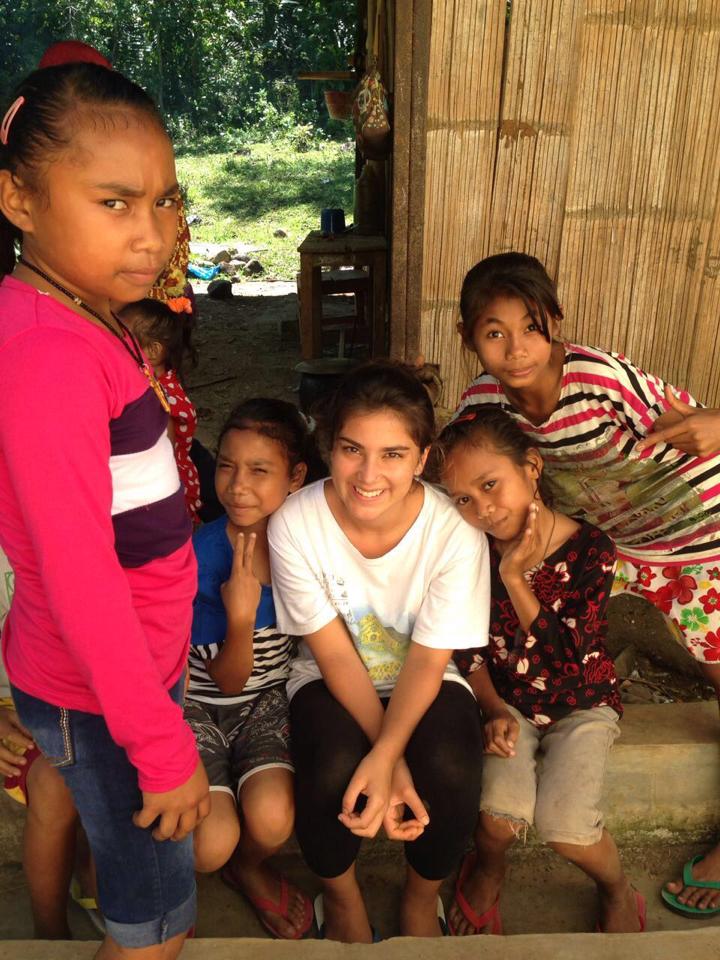
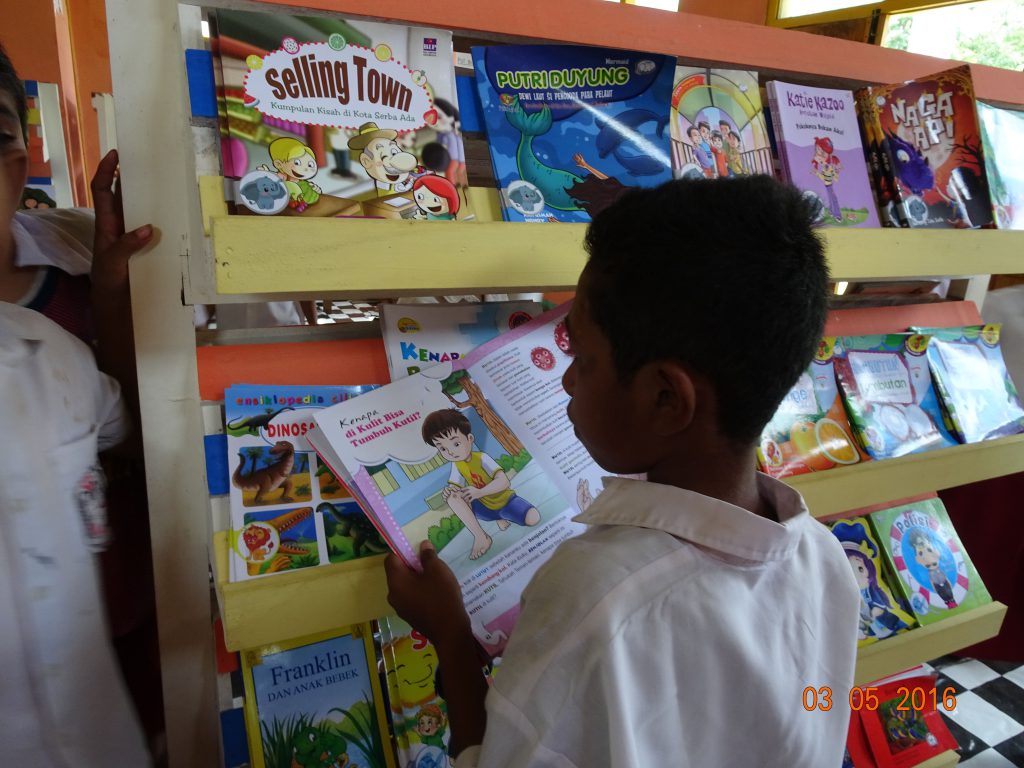
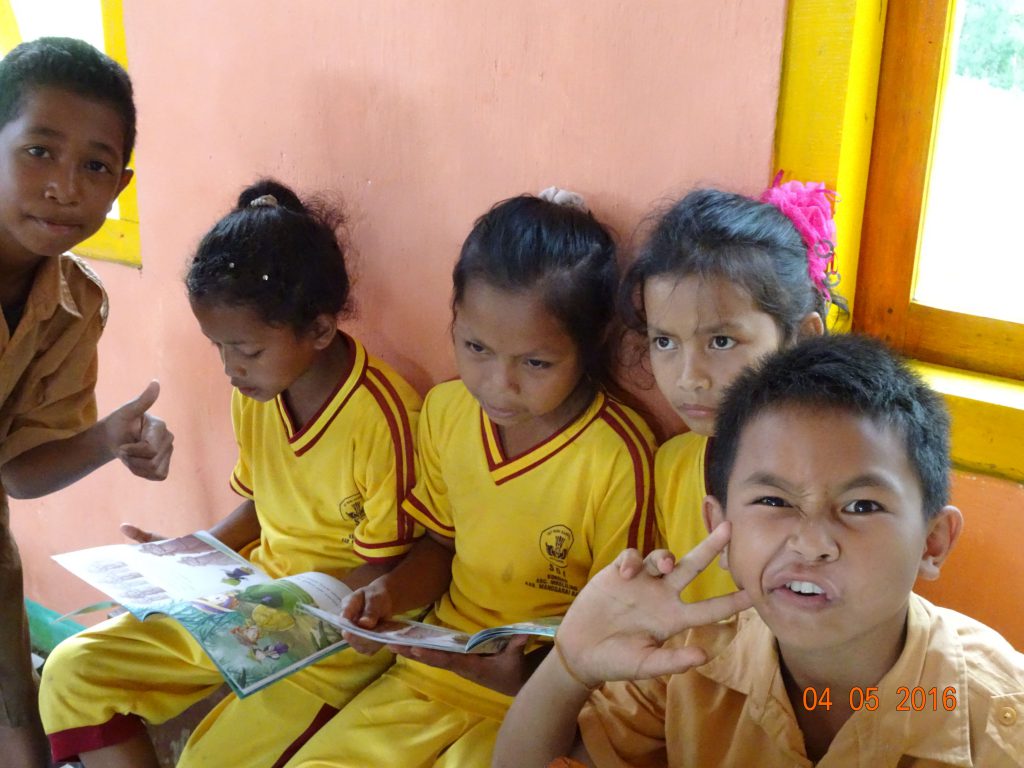
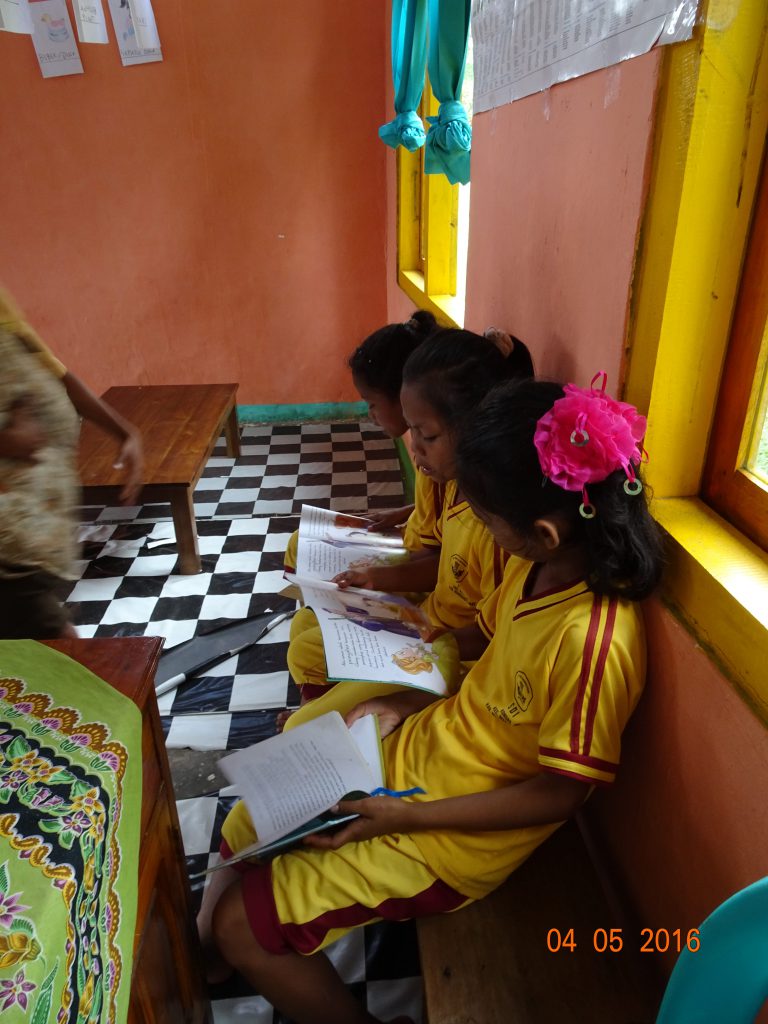
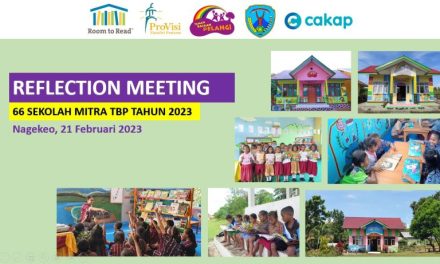
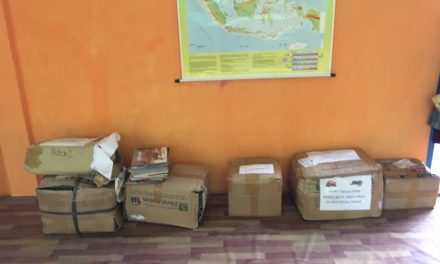
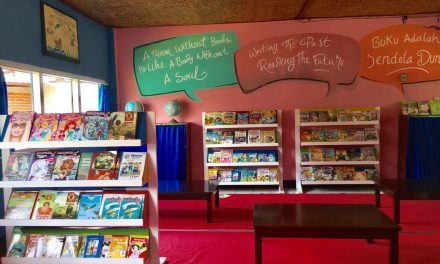
![Only one word can explain [Taman Bacaan Pelangi – SD Roe] is “WONDERFUL”](https://www.tamanbacaanpelangi.com/wp-content/uploads/2014/10/roe.jpg)
